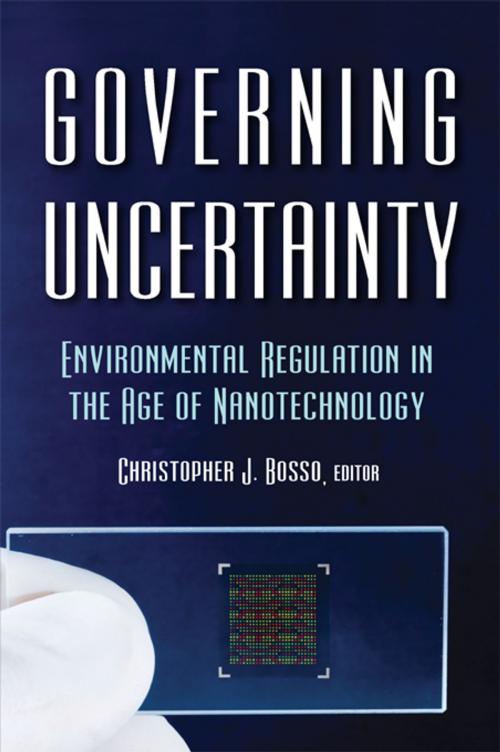Governing Uncertainty
Environmental Regulation in the Age of Nanotechnology
Nonfiction, Science & Nature, Nature, Environment, Ecology, Social & Cultural Studies, Political Science, Government| Author: | ISBN: | 9781136527807 | |
| Publisher: | Taylor and Francis | Publication: | June 25, 2012 |
| Imprint: | Routledge | Language: | English |
| Author: | |
| ISBN: | 9781136527807 |
| Publisher: | Taylor and Francis |
| Publication: | June 25, 2012 |
| Imprint: | Routledge |
| Language: | English |
Nanotechnology promises to transform the materials of everyday life, leading to smaller and more powerful computers, more durable plastics and fabrics, cheap and effective water purification systems, more efficient solar panels and storage batteries, and medical devices capable of tracking down and killing cancer cells or treating neurological diseases. Policy analysts predict a radical change in the industrial sector; at present, the U.S. government spends nearly $2 billion annually on nanotechnology research and development. Yet the nanotechnology revolution is not straightforward. Enthusiasm about nanotechnology‘s future is tempered by recognition of the hurdles to its responsible development, including the capacity of government to support technological innovation and economic growth while also addressing potential environmental and public health impacts. This is the first volume to engage scholarly perspectives on environmental regulation in light of the challenges posed by nanotechnology. Contributors focus on the overarching lessons of decades of regulatory response, while posing a fundamental question: How can government regulatory systems satisfy the desire for scientific innovation while also taking into account the direct and indirect effects of 21st century emerging technologies, particularly in the face of scientific uncertainties? With perspectives from economics, history, philosophy, and public policy, this new resource illuminates the various challenges inherent in the development of nanotechnology and works towards a reconceptualization of government regulatory approaches.
Nanotechnology promises to transform the materials of everyday life, leading to smaller and more powerful computers, more durable plastics and fabrics, cheap and effective water purification systems, more efficient solar panels and storage batteries, and medical devices capable of tracking down and killing cancer cells or treating neurological diseases. Policy analysts predict a radical change in the industrial sector; at present, the U.S. government spends nearly $2 billion annually on nanotechnology research and development. Yet the nanotechnology revolution is not straightforward. Enthusiasm about nanotechnology‘s future is tempered by recognition of the hurdles to its responsible development, including the capacity of government to support technological innovation and economic growth while also addressing potential environmental and public health impacts. This is the first volume to engage scholarly perspectives on environmental regulation in light of the challenges posed by nanotechnology. Contributors focus on the overarching lessons of decades of regulatory response, while posing a fundamental question: How can government regulatory systems satisfy the desire for scientific innovation while also taking into account the direct and indirect effects of 21st century emerging technologies, particularly in the face of scientific uncertainties? With perspectives from economics, history, philosophy, and public policy, this new resource illuminates the various challenges inherent in the development of nanotechnology and works towards a reconceptualization of government regulatory approaches.















